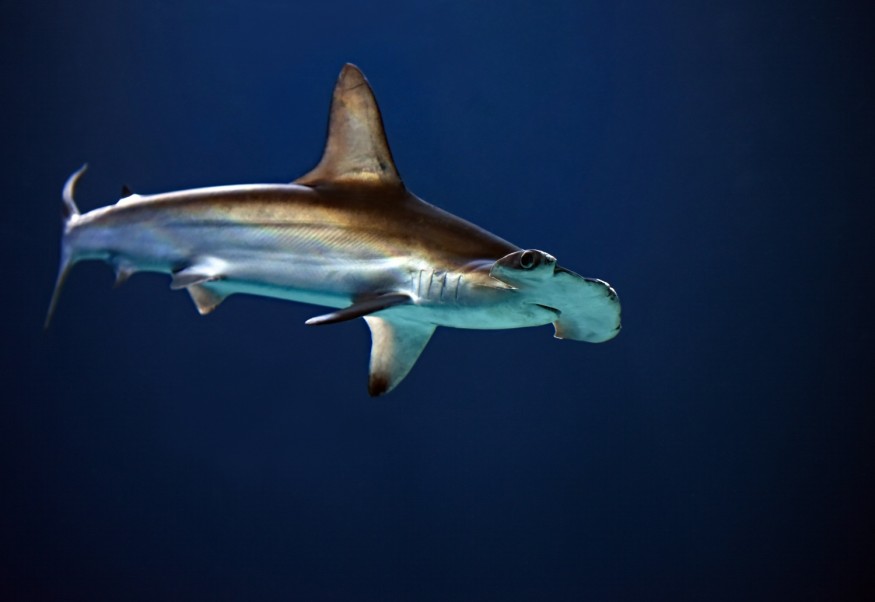The great hammerhead shark is the largest among shark species that can grow up to 20 feet and weigh up to 1,000 pounds, according to National Geographic. They are typically found in temperate and local waters both far offshore and near shorelines, usually in mass summer migrations seeking cooler water.
Earlier this month, an 11-foot great hammerhead shark washed ashore in Pompano Beach, southern Florida. Beachgoers were shocked to see such an impressive marine creature on the morning of April 6. Conservation scientists had removed the shark's remains away from onlookers when they arrived.

11Ft Great Hammerhead Shark Washed Up on Florida Beach Likely Due to Stress From Fishermen Recreational Activity
Stress Likely Caused Beaching of the Pregnant Great Hammerhead Shark
According to the Florida Fish and Wildlife Conservation Commission, great hammerhead sharks are common in the coastal waters around Florida. These sharks can live up to 20 years in the wild, but commercial longline fishers sometimes target them for their fins and kill them.
The impressive 11-foot hammerhead shark washed ashore at Pompano Beach, north of Fort Lauderdale, shocked visitors of the beach, CNN affiliate WPLG reported. After taking away the shark's body from the onlookers, a team of scientists from the American Shark Conservancy took samples and identified it as a pregnant great hammerhead shark.
Conservation scientist Hannah Medd, the founder of the American Shark Conservancy, told CNN that they took the measurements, fin clippings, and muscle tissue of the hammerhead shark. She said they were alerted by the Broward County Sea Turtle Conservation Program of the 500-pound pregnant shark.
A team member from the conservation group found the shark with a hook in its mouth, which indicates that someone was fishing the large animal. Medd explained that some recreational fishermen target sharks for catch-and-release activity. The stress and physical injuries caused by it can sometimes lead to sharks' death, and the great hammerhead is quite susceptible to stress.
It is illegal in Florida to catch, pursue, hunt or kill a white shark but legal to catch other sharks. Florida has different rules for different shark species. It is legal as long as one keeps away from protected sharks.
The team noted that it is rare to find great hammerhead sharks washed ashore. They advocate for the best catch-and-release activities that use only stronger fishing gear so that the "fight time" of the sharks is reduced. The shark is now buried on the beach after biologists took some samples.
ALSO READ: Critically Endangered Hammerhead Shark Spotted Further South of Australia Where They Are Rarely Seen
Hammerhead Shark's Behavior
Hammerhead sharks are famous for their hammer-shaped heads, where they got their name, Sciencing noted on its website. They have eyes on the opposite sides of the heads that allow them to have a wider vision than other shark species.
They usually travel in groups during summer to migrate and find cooler water. Hammerhead sharks can be found in tropical climates around the world, including the Indian Ocean, Atlantic Ocean, Pacific Ocean, and the Mediterranean Sea. But they usually live near the coastlines of Florida, Southern California, Texas, Louisiana, Georgia, Mississippi, and the Carolinas.
Hammerhead sharks are nocturnal species and are more active at night. They hunt using their sensory organs known as the ampullae of Lorenzini and lateral lines. Since they are carnivorous like other shark species, they hunt for fish, invertebrates, stingrays' barbed tails, and even other sharks. However, larger hammerhead sharks sometimes attack humans.
The mating season for hammerhead sharks is during summer. Males would latch onto females with their claspers that release sperm into the female and initiate the process of internal fertilization. They have a gestation period of 11 months and lay 30 to 40 eggs.
RELATED ARTICLE : Massive 13-Ft Hammerhead Shark Spotted Swimming Beneath Paddleboarders in Palm Beach [WATCH]
Check out more news and information on Sharks in Science Times.
© 2025 ScienceTimes.com All rights reserved. Do not reproduce without permission. The window to the world of Science Times.









